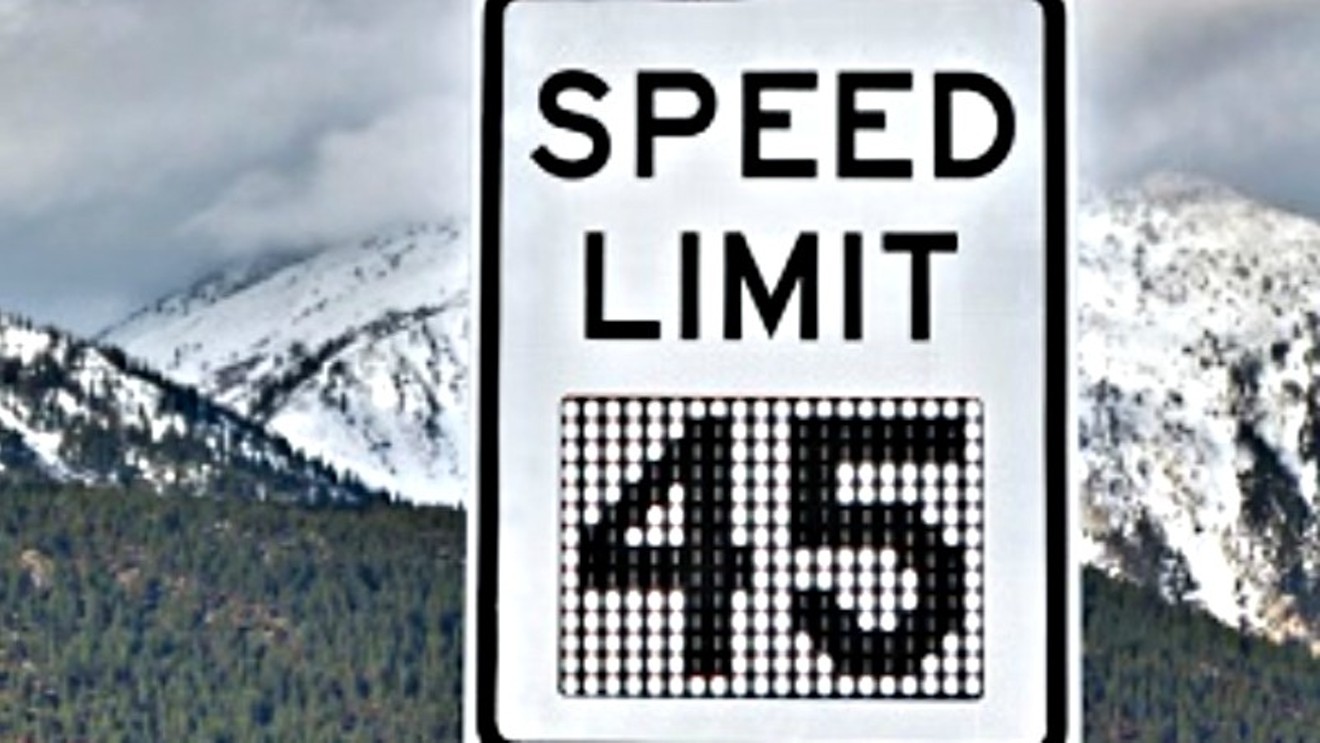Although the Colorado Department of Transportation has its eyes on the future, as seen in its advocacy of the Rocky Mountain Hyperloop project that recently won a global challenge, the agency is also trying to innovate when it comes to current highways. Hence the planned installation of variable speed limit signs in Glenwood Canyon that can either speed up or slow down traffic in response to weather and traffic conditions. VSL has already gotten a tryout near Boulder, and if the system works in Glenwood, among the trickiest sections along the Interstate 70 corridor, after installation set to begin during the coming months, it could be expanded to more roadways across the state.
"Like Hyperloop, this, too, is kind of a step into the technology realm," says CDOT spokesperson Amy Ford, "and I think people are intrigued, because it matches how we drive and helps us to be safer and get where we're going more reliably."
Winter often causes significant problems in Glenwood Canyon. In December 2015, for example, we reported about a seven-car crash that involved actor James Woods; afterward, he praised responders via Twitter before adding, "Sorry, I'm rambling. Little concussion." And the following February, we told you about rock slides that caused commuting headaches involving the canyon for well over a week.
In the meantime, CDOT placed some variable speed limit signage along U.S. 36 between Boulder and Interstate 25. "If you watch, you can see new speed limits pop up," Ford points out. "The idea is that we slow traffic down or speed it up depending on the roadway conditions in front of drivers. It's designed to make the roadway safer."
The concept is being expanded considerably in Glenwood Canyon over a fourteen-mile stretch of eastbound I-70 and fifteen miles of westbound I-70, including the Hanging Lake Tunnel area. In addition to seventeen new variable speed limit signs, CDOT crews plant to replace 38 static (meaning unchanging) signs with 73 new ones. And that's not to mention three weather stations for live weather-condition monitoring and reporting, nine closed-circuit cameras and what a department release calls "other surface and subsurface conduit, and related improvements to guide the display of the variable speed limits."
Ford explains the latter like so: "Basically, we're using censors and other visual data as a way of assessing what the right speed should be at any moment. Say there's a crash up ahead and cars are starting to stack up. Before even getting to that point, we'll start pushing the speed limit down so that people aren't coming in at seventy miles per hour and then having to do a hard stop."
If, on the other hand, conditions are ideal, the variable speed limit signs offer a bonus of sorts. Right now, the speed limit through the canyon is fifty miles per hour, but if all is well, Ford confirms, "the limit will be pushed up to sixty miles per hour for passenger vehicles and fifty for heavy vehicles. Whatever the conditions are, we can adjust things to the safest scenario."
The project is expected to be put out for bid next month, with construction scheduled to get underway in June and continue (after a winter break) through the fall of 2019. Once all the signage is in place, "we need people to work with us," Ford stresses. "If the speed limit says forty miles per hour, we highly encourage you to drive forty miles per hour. We have to continue to do good education with the public, because instead of wondering, 'Why did it drop all of a sudden?,' they'll realize there's a reason."
And probably not a very happy one.
[
{
"name": "Air - MediumRectangle - Inline Content - Mobile Display Size",
"component": "12017618",
"insertPoint": "2",
"requiredCountToDisplay": "2"
},{
"name": "Editor Picks",
"component": "17242653",
"insertPoint": "4",
"requiredCountToDisplay": "1"
},{
"name": "Inline Links",
"component": "18838239",
"insertPoint": "8th",
"startingPoint": 8,
"requiredCountToDisplay": "7",
"maxInsertions": 25
},{
"name": "Air - MediumRectangle - Combo - Inline Content",
"component": "17261320",
"insertPoint": "8th",
"startingPoint": 8,
"requiredCountToDisplay": "7",
"maxInsertions": 25
},{
"name": "Inline Links",
"component": "18838239",
"insertPoint": "8th",
"startingPoint": 12,
"requiredCountToDisplay": "11",
"maxInsertions": 25
},{
"name": "Air - Leaderboard Tower - Combo - Inline Content",
"component": "17261321",
"insertPoint": "8th",
"startingPoint": 12,
"requiredCountToDisplay": "11",
"maxInsertions": 25
}
]













